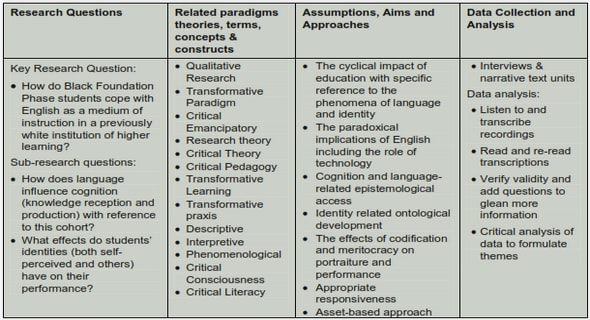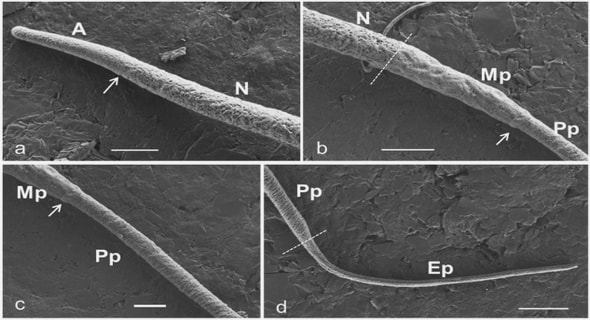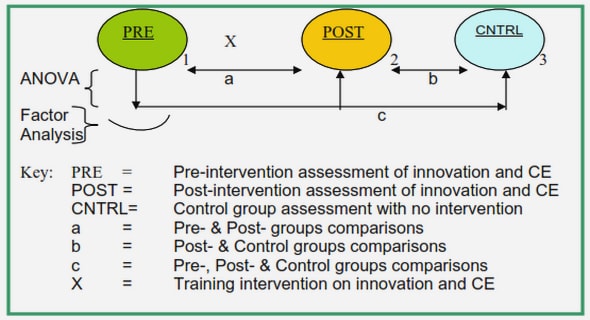Get Complete Project Material File(s) Now! »
CHAPTER 3 God’s grand acts as divine history embedded in the Bible God’s grand acts open to speculative or biblical reflection?
Introduction
The phenomenon of the belief that by virtually inserting oneself or ones community into the different eras and contexts of the Old and New Testament, one is directly experiencing the presence of God, while divine history is in the making, can be ascribed to the way people make sense of how the scriptural texts are telling us of these eras and contexts have been written and composed. Were these texts written and composed by people in the normal way of telling stories of what happened in their lives or were these people inspired by God’s Spirit, to write these stories through their own individual sense-making experiences, or were God’s Spirit self the writer and oral composer of these stories by moving the tongue and the pen in the hand of the human speaker and write?. In the era since the Reformation of the 16th century, an overwhelming number of approaches of how people and communities make sense of the divine history in which God has been directly involved emerged. The majority of Christians believe that God was the direct author and player in the divine history and that in the Old and the New Testament the living God of the whole of history was and is still making history for the salvation of people in the world while simultaneously managing the whole of world history (Guthrie 1960:3-13).
God made and makes history through the timeline expressed in the divine history through which God made himself known by God creating everything long ago, letting or not letting people fall into sin, God providing the salvific solution for humanity and nature in Jesus Christ, God again making history by providing the continuous renewing guidance through the Holy Spirit for people and that God finally drawing people to the end of the timeline in the fulfilment of the new heaven and the new earth.
Broadly two directions were taken by people and their communities who inserted themselves as partakers of the divine history into the timeline of divine history of God’s grand acts of creation, reconciliation, renewal and fulfilment in the new heaven and new earth. The first direction is that of the Roman Catholic approach which saw themselves to such an extent as a continuation of the divine history of the First Testament – Old Testament for non-Catholics – and the Second Testament – New Testament for non-Catholics – that they are not only a continuation from the beginning of God’s act of creation but also a total care-giving representation of the timeline of divine history into and after the fulfilment of the end of time. The other direction which is propagated by the more Protestant inclined way of making sense in the modern era is expressed therein that the Judeo-Christian Bible from Genesis to Revelation is the total, full and sufficient exploration area where the sense of divine salvation history couched in natural human history is readily available and obtainable in a clear sense.
The type of historicity that covers Calvin and White’s views of the Old Testament and the New Testament is expressed in the continuous fusion of divine and supernatural historical acts and events interposed in human and natural historical acts and events of the salvation-historical timeline of the Bible from Genesis to Revelation. According to Vos (1906:299) the biblical timeline of supernatural historical events can be intrinsically characterised as salvation-historical, soteriological and evangelical. The extensive exposition given by Vos regarding supernatural biblical revelation as ‘on principle inseparable from a background of historic facts’ could aptly be applied to both Calvin and White’s views (Vos 1906:299-300). A two level scheme of historicity is at work in the evolvement of the salvation-historical timeline in which continuous divine historical interpositions are manifested in the course of natural evolvement of biblical history. The difference between Calvin and White regarding their approaches of a double sense of historicity, historical and historic facts and events within the biblical timeline is not of quality but of degree and emphasis.
Although the latter approach originates from the time of early Christianity, John Calvin was one of a diverse group of 16th century Reformers who finally established and affirmed the Judeo-Christian Bible as exploration area for the full and sufficient, clear and easily to be made sense of Book that according to them depicted divine history for people’s salvation in time and eternity. Though Calvin as well as Luther and Zwingli were avowed advocators of the complete range of God’s grand acts of creation, reconciliation, renewal and fulfilment they far more than was necessary, emphasised God’s grand acts of creation and reconciliation. On the other hand, Ellen G. White as one of another diverse group of 19th century prophetic Reformers in an era of high modernism, followed partially in the footsteps of Calvin and Luther. While giving the phenomenon of divine history expressed in the Bible a higher concentration and intensification quality in the 19th century she simultaneously shifted the emphasis to the grand acts of reconciliation and fulfilment both revolving in and around Christ. It is significant that White’s central point was Jesus Christ as present indwelling Lord and as the imminent second coming of Christ as God’s glorious future (Damsteegt [1957] 1977:13-16; Plantak 1998:39).
Calvin and White’s challenges
Both Calvin and White express in fairly consistent ways the types of Biblical timeline and salvation-historical approaches they employ in their faith reflection. Generally speaking, in operation in most of their works are the explicit and implicit Biblical denotation of God’s grand acts of creation, reconciliation (redemption) through the cross and resurrection of Jesus Christ, God’s wholesome renewal process through the Spirit of Pentecost and God’s future-directed fulfilment in the new heaven and new earth. What is of importance here is that their sense-making approaches through different emphasis and ways of working differ considerably in some areas and overlap largely in other areas. What could be reckoned as one of the strong overlapping areas is their emphasis on a salvation-historical framework played out as divine history embodied and embedded in a divine historical timeline of the Judaeo-Christian Bible. Furthermore, has the notion of a Trinitarian God any role to play in the extreme emphasis of Calvin and White on the biblical historical timeline?
The first challenge revolves around a radical emphasis on the notion of coherence that God, human beings and the natural cosmic environment are involved in each grand act of God. For many this may seem an unnecessary challenge because it goes without saying that in each, the grand acts of God human beings and the natural cosmic environment are involved. The first challenge in terms of the accepted approach is that one’s faith pattern of coherent reflection should not operate on two separate levels into which one has insight which is not available to any other person around oneself. The question is whether the realms for reflection of Calvin and White which are entrenched in the divine history embodied and embedded in the timeline of the four grand acts as portrayed in the Judeo-Christian Scripture allow for an extra divine level above the divine historical series of events in the biblical timeline they truthfully viewed themselves as being part of.
Moreover, do Calvin in his biblical patterns of faith reflection and White in her prophetic visionary reflection in combination with her faith reflection, on the biblical patterns have insight into such an extra divine level or realm hovering above the divine history as portrayed in the Bible they are part of? The construction of an extra level or realm for reflection above the biblical historical timeline was part of the fabric that the scholastics and speculative theology Calvin with his pastorally inclined theology, vehemently reacted against. Calvin states regarding the purpose of biblical history:
Indeed, the principal purpose of Biblical history is to teach that the Lord watches over the ways of the saints with such great diligence that they do not even stumble over a stone.
The question is, why Calvin in his strong emphasis of the reflection realms of creation and reconciliation in his ‘Institutes of the Christian Religion’ accepted the notion of a Trinitarian God, which has the ground rule from early Augustinian neo-platonic scholastics to nearly always hover above the biblical divine historical timeline of the grand acts of God? Or in other instances, the construct of the trinity simultaneously precedes and transcends the four grand acts of God.
White in her prophetic pastoral approach in a similar sense reacted against the classic speculative approaches, but what is of importance regarding her era is that she reacted also against what she viewed as the speculative scientific patterning in sciences that transcend the biblical historical timeline viewed by her as set in motion and sustained by God solely. The best example of her emphasis on the biblical divine historical timeline is the ostensible neglect of the doctrine of the trinity in her writings, sayings and doings. In Seventh-day Adventist circles in a bid to be more readily accepted into mainline thinking regarding the trinity appeared to dither on the anti-speculative stance of White and early Seventh-day Adventists.
In the current debate Whidden regarding the early anti-speculative and anti-trinitarian stance of White and her husband asserts:
While it is hard to be dogmatic about the cause/effect relationships between the healing of Adventist Arian and anti-Trinitarian expressions and soteriological imbalance, there are a number of factors that seem to come into play….First of all, one does not get the feeling that there was a lot of self-conscious theological reflection which transpired in any scholastic/systematic way. It appears that these developments were really quite ad hoc, almost to the point of seeming ‘providential.’ What is clear, is that the Whites took the lead and they mainly seemed to draw their theological cues from their pastoral concerns regarding the low estate of the perceived spiritual experience of the Seventh-day Adventist denomination. As they began to perceive that legalistic concerns had quite obscured the primacy of Christ as atoning sacrifice and justifying Saviour, they began to reflect practically on how to bring the movement back into a greater emphasis on the centrality of Christ and His atoning sacrifice. In other words, it was practical/theological concerns, primarily having to do with an out-of-balance theology that seemed to draw them to a more critical reflection having to do with the full deity of Christ.
1.1Salvation historical biblical reflection
1.2Demarcation and setting of the problem areas
1.3The structure of the thesis
Chapter 2The social-historical contexts of Calvin and White
2.1Introduction
2.2Epilogue
Chapter 3God’s grand acts as divine history embedded in the Bible
3.1God’s grand acts open to speculative or biblical reflection?
3.2Dialectics, scholastics and speculative theology
3.3The notion of the trinity and the biblical historical timeline
3.4Epilogue
Chapter 4Reflection on God’s grand acts (continued)
4.1God, human beings and nature connected and different
4.2Epilogue
Chapter 5Calvin and White on the coherence of God’s grand acts
5.1Introduction
5.2Calvin and God’s grand acts of Creation, Reconciliation, Renewal and Fulfilment
5.3White and God’s grand acts of Creation, Reconciliation, Renewal and Fulfilment
5.4Calvin and White on the role and origin of sin
5.5Calvin and White on the state of the dead
5.6Calvin and White on politics and government
5.7Epilogue
Chapter 6The centrality of God’s grand act of reconciliation in Jesus Christ
6.1Introduction
6.2Jesus Christ: dual nature
6.3Christ’s identity as mediator and substitution
6.4The interactive exchange of the roles of divinity and humanity of Christ
6.5Titles, offices and dimensions of Christ’s identity
6.6The Second coming of Christ
6.7Summary of interactional substantialism
6.8Monolithic mono and dual substantialist views
6.9Transformational substantialism
6.10Consubstantialism
6.11Epilogue
Chapter 7 Mirroring, Interpretation and Consensual negotiation approach of texts, theories, natural processes and human doings
7.1The three approaches
7.2Calvin and the mirroring, interpretation and consensual negotiation approaches
7.3White and the mirroring, interpretation and consensual negotiation approaches
7.5Epilogue
Bibliography
GET THE COMPLETE PROJECT
THE CENTRALITY OF JESUS CHRIST IN GOD’S ACTS OF CREATION, RECONCILIATION, RENEWAL AND FULFILMENT – THE VIEWS OF JOHN CALVIN AND ELLEN G WHITE


